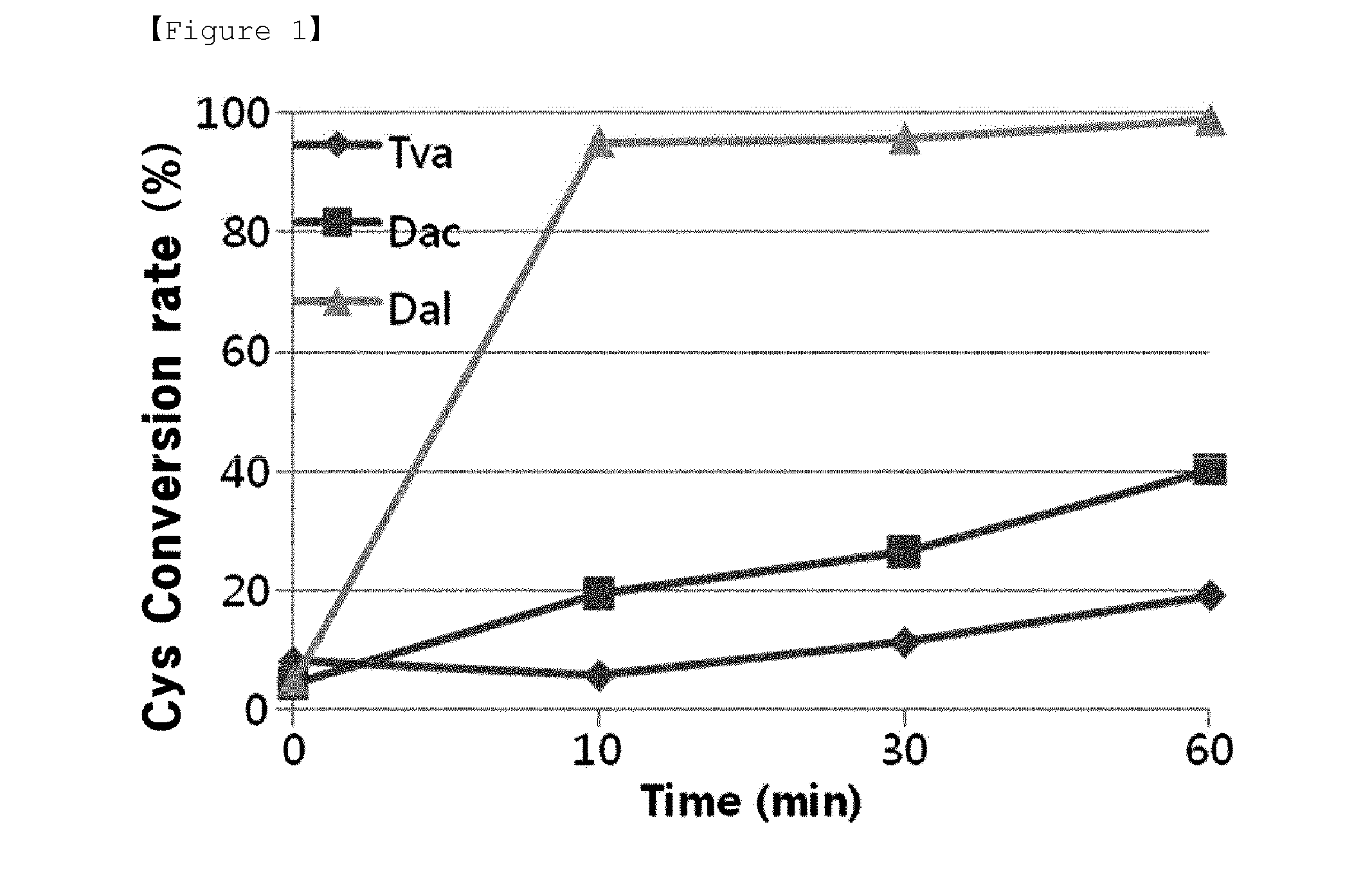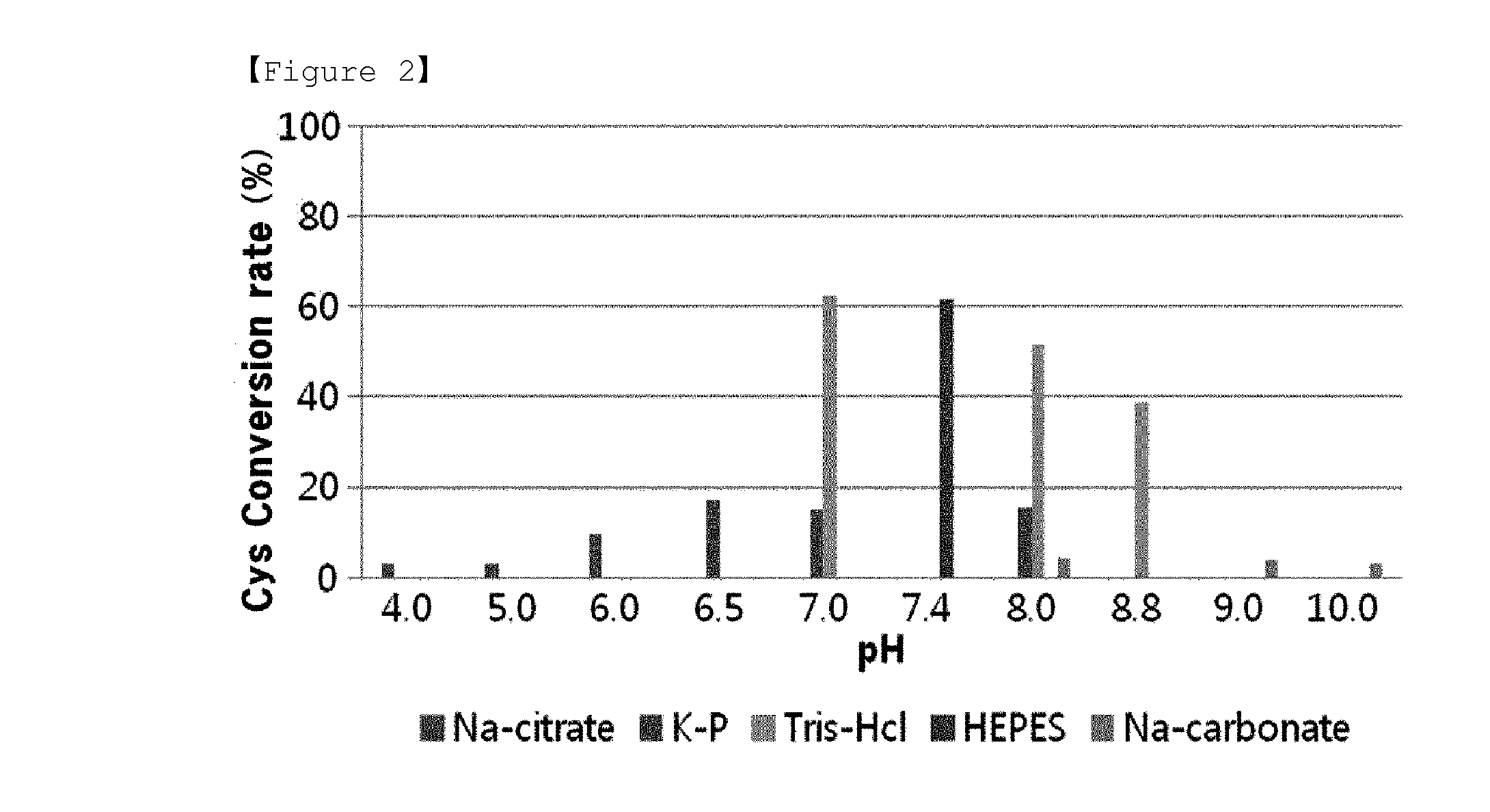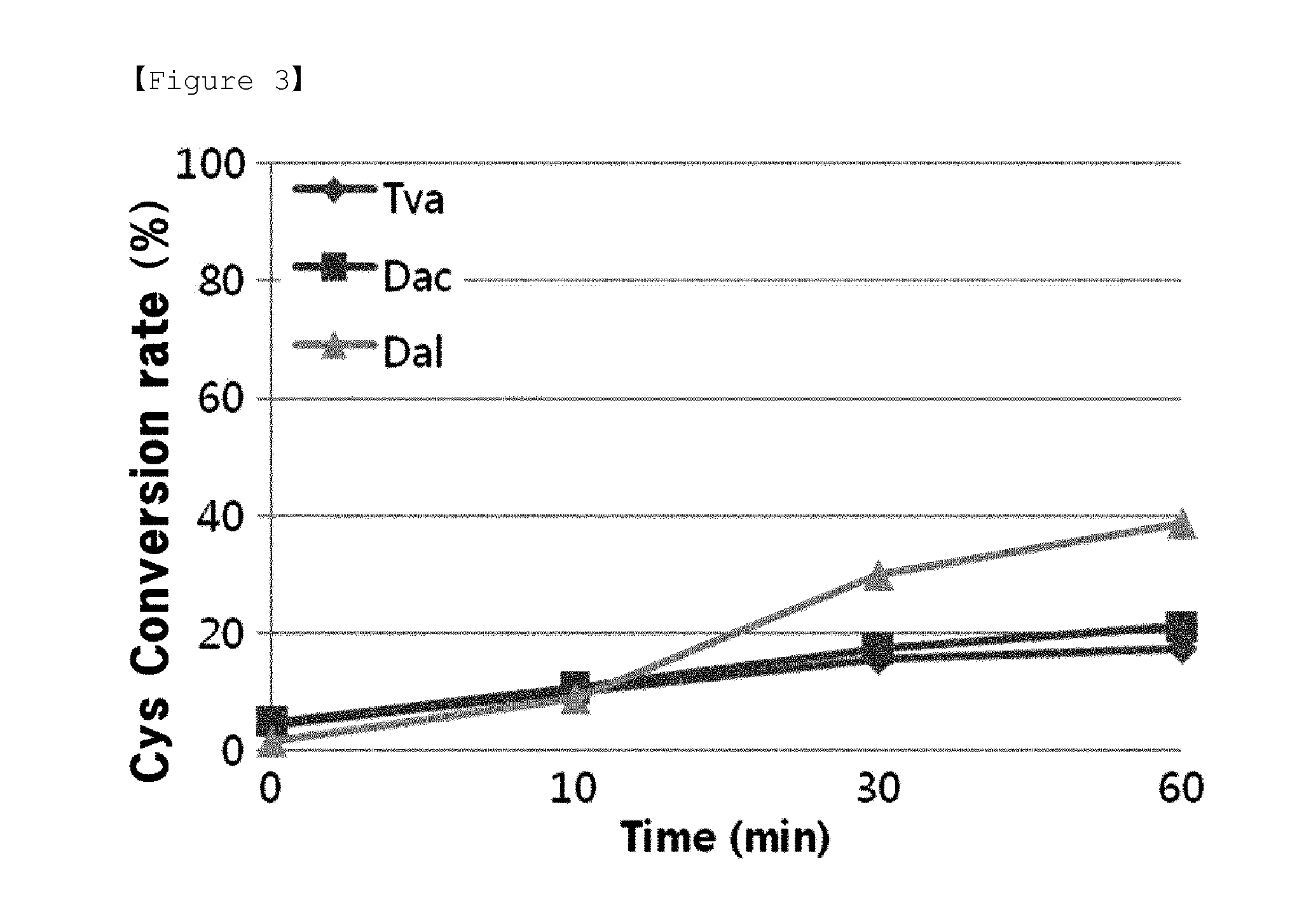Method for preparing cysteine or a derivative thereof using a novel o-phosphoserine sulfhydrylase
a technology of phosphoserine sulfhydrylase and o-phosphoserine sulfhydrylase, which is applied in the direction of enzymology, biochemistry apparatus and processes, and transferases, can solve the problems of low production of cysteine from hairs, strong aversion of users, and environmental pollution, and achieve high yield
- Summary
- Abstract
- Description
- Claims
- Application Information
AI Technical Summary
Benefits of technology
Problems solved by technology
Method used
Image
Examples
example 1
Identification of O-Phosphoserine Sulfhydrylase (OPSS) Enzyme
[0035]It was reported that Trichomonas vaginalis-derived OPSS has an activity without cofactors, unlike Mycobacterium tuberculosis-derived OPSS which requires two types of cofactors in addition to OPSS, and has an optical activity at 37° C., unlike Aeropyrum pernix-derived OPSS which exhibits an optical activity at 60° C. Based on this fact, the present inventors isolated novel OPSSs derived from microorganisms, which show high sequence homology of the OPSS amino acid sequence derived form T. vaginalis. The novel OPSSs have an amino acid sequence of SEQ ID NO. 1 or 2, and is designated as Dac-OPSS or Dal-OPSS, respectively. Further, the novel OPSS having the amino acid sequence of SEQ ID NO. 1 or 2 is encoded by a polynucleotide having a nucleotide sequence of SEQ ID NO. 9 or 10, respectively.
[0036]Because these two OPSSs are not derived from E. coli, their expression in E. coli may be difficult. To facilitate their expres...
example 2
Assay of OPSS Enzyme for Cysteine Synthesis Activity
[0039]The cysteine converting activities of above obtained 3 types of OPSS enzymes were measured to examine whether cysteine can be synthesized by using OPS as a substrate. The conditions and methods for assay of cystein converting activity (cysM enzyme assay), was made reference to previous reports (Mino K and Ishikawa K, FEBS letters, 551: 133-138, 2003; Burns K E, Baumgart S, Dorrestein P C, Zhai H, McLafferty F W and Begley T P, J. Am. Chem. Soc., 127: 11602-11603, 2005; Westrop G D, Goodall G, Mottram J C and Coombs G H, J. Biol. Chem., 281: 25062-25075, 2006). Assay conditions for enzyme activity are the same as shown in Table 2, below.
TABLE 2Stock sol'nFinal Conc.BlankOBSS6xhis-enzyme— 40(50 μg)1 M HEPES100 mM HEPES 100 100(pH 7.4)0.5 M Na2S10 mM Na2S 20 2010 mM PLP0.2 mM PLP 20 20100 mM OPS5 mM OPS 0 50DW 790 750Total10001000
[0040]Reaction solutions, except the enzymes, were incubated at 37° C. for 5 min. After then, 50 μg...
example 3
pH Sensitivity of OPSS Enzyme
[0042]In order to examine the effect of pH on the cysteine synthesis, the cysteine conversion rates of Dal-OPSS according to pH were measured. In 100 mM of buffer, 50 μg / mL thereof was subjected to reaction at 37° C. for 30 minutes. In this regard, K-phosphate buffer with pH of 6.4 / 7.0 / 7.4 / 8.0, Tris-HCl buffer with pH of 7.0 / 7.4 / 8.0 / 8.5 / 8.8, Na-carbonate buffer with pH of 8.0 / 8.5 / 9.0 / 10.0, HEPES buffer with pH of 7.4, and Na-citrate buffer with pH of 4.0 / 5.0 / 6.0 were used. The quantitative analysis of the produced cysteine was carried out using the Gaitonde method. As shown in FIG. 2, the highest activity was observed at pH 7.0˜7.4, and the highest activity was detected in Tris-HCl (pH 7.0), and little activity was detected in Na-citrate and Na-carbonate buffers. Further, an optimal pH differed from one buffer to another.
PUM
| Property | Measurement | Unit |
|---|---|---|
| temperature | aaaaa | aaaaa |
| pH | aaaaa | aaaaa |
| volume | aaaaa | aaaaa |
Abstract
Description
Claims
Application Information
 Login to View More
Login to View More - R&D
- Intellectual Property
- Life Sciences
- Materials
- Tech Scout
- Unparalleled Data Quality
- Higher Quality Content
- 60% Fewer Hallucinations
Browse by: Latest US Patents, China's latest patents, Technical Efficacy Thesaurus, Application Domain, Technology Topic, Popular Technical Reports.
© 2025 PatSnap. All rights reserved.Legal|Privacy policy|Modern Slavery Act Transparency Statement|Sitemap|About US| Contact US: help@patsnap.com



